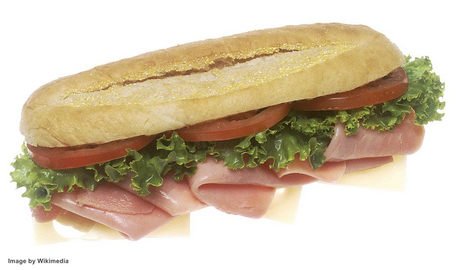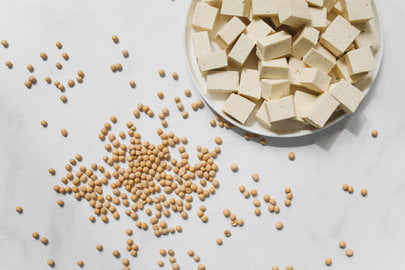Have you ever wondered how long rotisserie chicken lasts in the fridge? Well, here’s some interesting news for you! The Shelf Life of Rotisserie Chicken is a handy guide that tells you all about it. It gives you important information on how long you can keep that tasty chicken in your fridge before it goes bad. No more guessing or worrying if it’s still safe to eat – this guide has got you covered! Let’s dig in and learn more about keeping your rotisserie chicken fresh and delicious for as long as possible.
Understanding Shelf Life
Definition of shelf life
Shelf life refers to the length of time that a particular food item can be stored and remain safe to eat. It is the time between when a food is prepared or purchased and when it starts to deteriorate in quality or become unsafe to consume.
Importance of knowing shelf life
Knowing the shelf life of food is important because it helps us make informed decisions about when to use or toss out certain items. By understanding how long food can be stored before it spoils, we can minimize the risk of foodborne illnesses and avoid wasting food.
Factors affecting shelf life
Several factors can affect the shelf life of food, including temperature, moisture, exposure to air, and the presence of bacteria or other microorganisms. These factors can cause food to spoil more quickly or become unsafe to eat. It’s important to consider these factors when storing and handling food to maximize its shelf life.
The Basics of Rotisserie Chicken
Definition and origin
Rotisserie chicken is a type of cooked chicken that is slowly roasted on a rotisserie, a rotating spit, over an open flame or in an electric oven. This cooking method ensures that the chicken is evenly cooked and results in a juicy and flavorful meat. Rotisserie chicken is believed to have its origins in France and has become popular worldwide.
Cooking process
To make rotisserie chicken, the chicken is first seasoned with herbs, spices, and other flavors. It is then secured onto a rotisserie spit and cooked for several hours while continuously rotating. The slow rotation helps to evenly distribute the heat, ensuring that the chicken is cooked thoroughly and retains its moisture.
Popularity and availability
Rotisserie chicken has gained immense popularity due to its convenience and delicious taste. It is readily available in many grocery stores, restaurants, and food markets. The convenience of being able to purchase a fully cooked chicken makes it a popular choice for quick and easy meals.

Fresh Cooked Rotisserie Chicken
Immediate consumption
Freshly cooked rotisserie chicken is best enjoyed immediately after purchase. The chicken is at its peak flavor, juiciness, and tenderness when it is still warm. The skin is crispy, and the meat is succulent and flavorful, making it a delectable meal.
Proper care for immediate consumption
To ensure the best quality of freshly cooked rotisserie chicken, it is essential to handle it with care. Keep the chicken hot during transportation, and make sure it remains at a safe temperature until consumed. Avoid any unnecessary delay in consuming the chicken to maintain its taste and quality.
Effects of immediate consumption on taste and quality
Eating freshly cooked rotisserie chicken ensures a delightful dining experience. The meat is moist, the flavors are robust, and the skin is crispy. The longer the chicken sits before consumption, the more it loses its desirable texture and taste. Thus, it is recommended to enjoy the chicken as soon as possible to savor its deliciousness.
Rotisserie Chicken in the Fridge
Ideal refrigeration temperature
When storing rotisserie chicken in the fridge, it is important to maintain a temperature below 40 degrees Fahrenheit (4 degrees Celsius). This low temperature helps slow down the growth of bacteria and keeps the chicken fresh for a longer period.
Influence of refrigeration on taste and texture
Refrigeration helps to keep rotisserie chicken safe to consume for a few days, but it can affect its taste and texture. The chicken may become drier and lose some of its original juiciness. However, when properly refrigerated, the chicken can still be enjoyed as a tasty meal.
Recommended shelf life of refrigerated chicken
When stored in the fridge at the ideal temperature, rotisserie chicken can typically last for 3 to 4 days. It is important to note that the quality of the chicken may gradually decline over time, so it is best to consume it within the recommended shelf life for optimal taste and safety.

Rotisserie Chicken in the Freezer
Ideal freezing temperature
To prolong the shelf life of rotisserie chicken, it can be frozen. The ideal temperature for freezing chicken is 0 degrees Fahrenheit (-18 degrees Celsius). Freezing the chicken at this temperature helps to maintain its quality and keeps it safe for a longer period.
Freezing process and its effects on chicken
When freezing rotisserie chicken, it is important to transfer it to an airtight container or wrap it tightly in freezer-safe packaging. Freezing slows down the growth of bacteria and other microorganisms, preserving the chicken for an extended period. However, freezing can cause the texture of the meat to change slightly, and the chicken may lose some moisture.
Recommended shelf life of frozen chicken
When properly stored in the freezer, rotisserie chicken can last for up to 4 months. It is essential to mark the date of freezing on the packaging to keep track of its shelf life. To maintain the best quality, it is recommended to consume the chicken within the recommended time frame.
Signs of Spoilage in Rotisserie Chicken
Visual cues
Visual cues can indicate whether rotisserie chicken has spoiled. Look for any changes in color, such as green or gray patches, or an unnatural slimy or sticky texture. If the chicken appears discolored or has an unpleasant odor, it is an indication that it has gone bad.
Smell and texture
The smell is another important indicator of chicken spoilage. Freshly cooked rotisserie chicken should have a pleasant, savory aroma. If the chicken emits a foul odor, it is a sign that it has spoiled and should not be consumed. Additionally, if the chicken feels slimy or has an unusually soft or mushy texture, it is best to discard it.
Potential health risks of consuming spoiled chicken
Consuming spoiled rotisserie chicken can lead to food poisoning and cause various symptoms such as stomach cramps, vomiting, diarrhea, and fever. It is important to prioritize food safety and avoid consuming any chicken that shows signs of spoilage.
Health and Safety Considerations
Food poisoning and bacteria
Food poisoning can occur when bacteria, such as Salmonella or Campylobacter, contaminate the chicken and are ingested. These bacteria can cause severe illness if the chicken is not handled, cooked, or stored properly. It is crucial to follow proper food handling practices to prevent the growth of harmful bacteria.
Proper handling and storing techniques
To ensure food safety, always wash your hands before and after handling rotisserie chicken. Keep raw and cooked chicken separate to avoid cross-contamination. When refrigerating or freezing chicken, make sure it is stored in leak-proof containers to prevent bacteria from spreading. Thoroughly cook chicken to an internal temperature of 165 degrees Fahrenheit (74 degrees Celsius) to eliminate any harmful bacteria.
Health risks of eating chicken beyond its shelf life
Eating rotisserie chicken beyond its recommended shelf life can increase the risk of foodborne illnesses. Bacteria can multiply rapidly in spoiled chicken, leading to potential health hazards. It is crucial to follow the guidelines for proper storage and discard any chicken that has expired or shows signs of spoilage.
Reviving Leftover Rotisserie Chicken
Methods for reheating
To revive leftover rotisserie chicken, it can be reheated using various methods. The chicken can be heated in an oven, microwave, or stovetop, depending on personal preference and convenience. It is important to ensure the chicken reaches an internal temperature of 165 degrees Fahrenheit (74 degrees Celsius) when reheating to eliminate any bacteria.
Effect of reheating on taste and texture
Reheating rotisserie chicken can help bring back some of its original flavor and texture. However, repeated reheating can cause the chicken to become drier and less tender. To prevent excessive drying, it is recommended to add a bit of moisture, such as chicken broth or sauce, during the reheating process.
Tips for reusing leftovers in other dishes
Leftover rotisserie chicken can be a versatile ingredient in various dishes. It can be shredded and used in salads, sandwiches, or wraps. The meat can also be added to soups, stir-fries, or casseroles for added flavor and protein. Get creative and explore different recipes to make the most of your leftover rotisserie chicken.
Environmental Effects on Shelf Life
Impact of humidity and air exposure
Humidity and air exposure can heavily influence the shelf life of rotisserie chicken. High humidity can promote bacterial growth, leading to faster spoilage. Exposure to air can cause the chicken to dry out and lose moisture, affecting its taste and texture. It is important to store rotisserie chicken in airtight containers or packaging to protect it from these environmental elements.
Movement between different temperatures
Frequent temperature fluctuations can negatively impact the shelf life of rotisserie chicken. Moving the chicken between hot and cold environments can cause condensation, which can contribute to bacterial growth and moisture loss. It is best to store the chicken in consistent temperature conditions to maintain its freshness and quality.
Reactions with different storage materials
The type of storage material can also affect the shelf life of rotisserie chicken. Certain materials, such as plastic wrap or containers, can impact the moisture level and accelerate the deterioration of the chicken. It is advisable to use food-grade storage bags or airtight containers specifically designed for storing poultry to extend its shelf life.
Optimizing Shelf Life of Rotisserie Chicken
Immediate storage after purchase
After purchasing rotisserie chicken, it is crucial to store it promptly to maintain its freshness. If you don’t plan to consume it immediately, refrigerate or freeze it within two hours of purchase to prevent bacterial growth and maintain its quality.
Proper packaging techniques
To optimize the shelf life of rotisserie chicken, proper packaging is essential. If refrigerating the chicken, transfer it to an airtight container or wrap it tightly with plastic wrap. For freezing, use freezer-safe bags or containers and ensure they are sealed tightly to prevent freezer burn and maintain quality.
Rotisserie-specific considerations for extending shelf life
To extend the shelf life of rotisserie chicken, it is important to consider its specific characteristics. Remove the chicken from its original packaging and promptly transfer it to a suitable storage container. Avoid storing the chicken with other odor-absorbing foods to preserve its taste and aroma. Additionally, if buying a whole rotisserie chicken, consider dividing it into smaller portions before storing to increase convenience and reduce waste.
By understanding the shelf life of rotisserie chicken and following the recommended storage guidelines, you can enjoy this delicious and convenient meal while ensuring food safety. Remember to prioritize proper handling, storage, and reheating techniques to make the most of your rotisserie chicken and minimize food waste.





